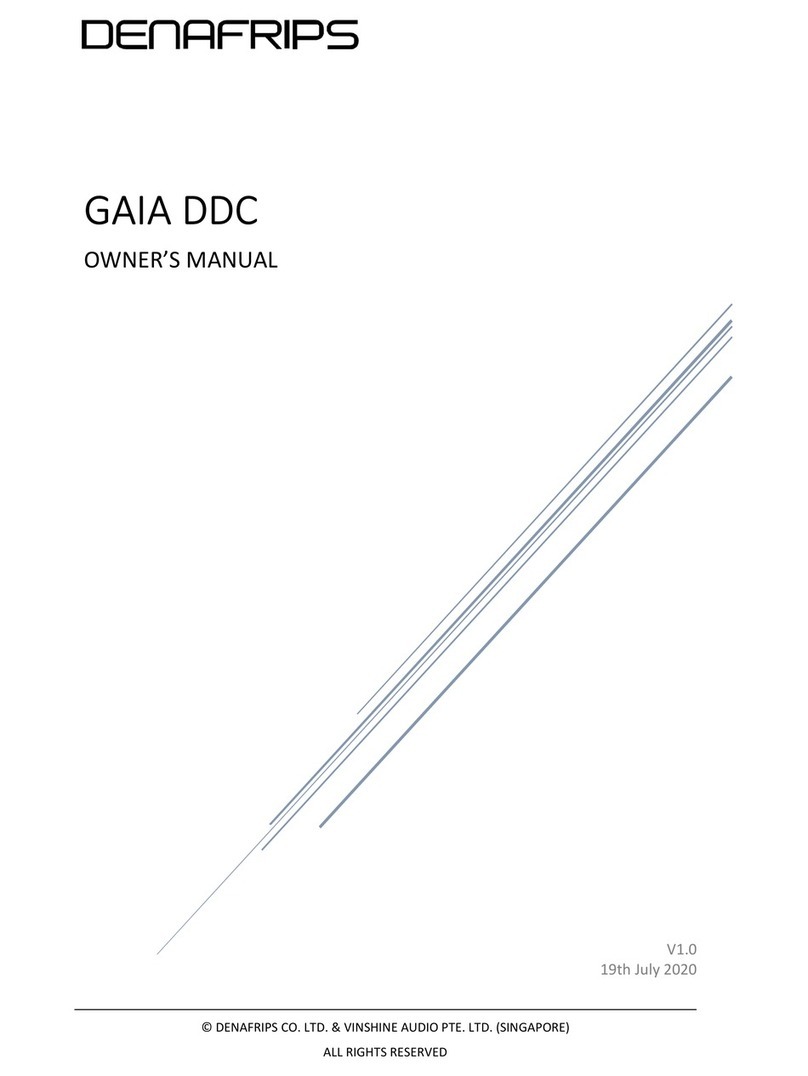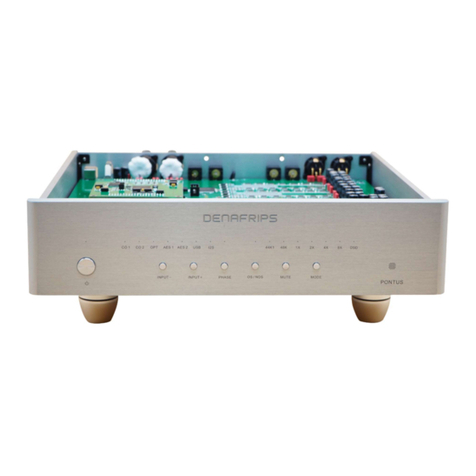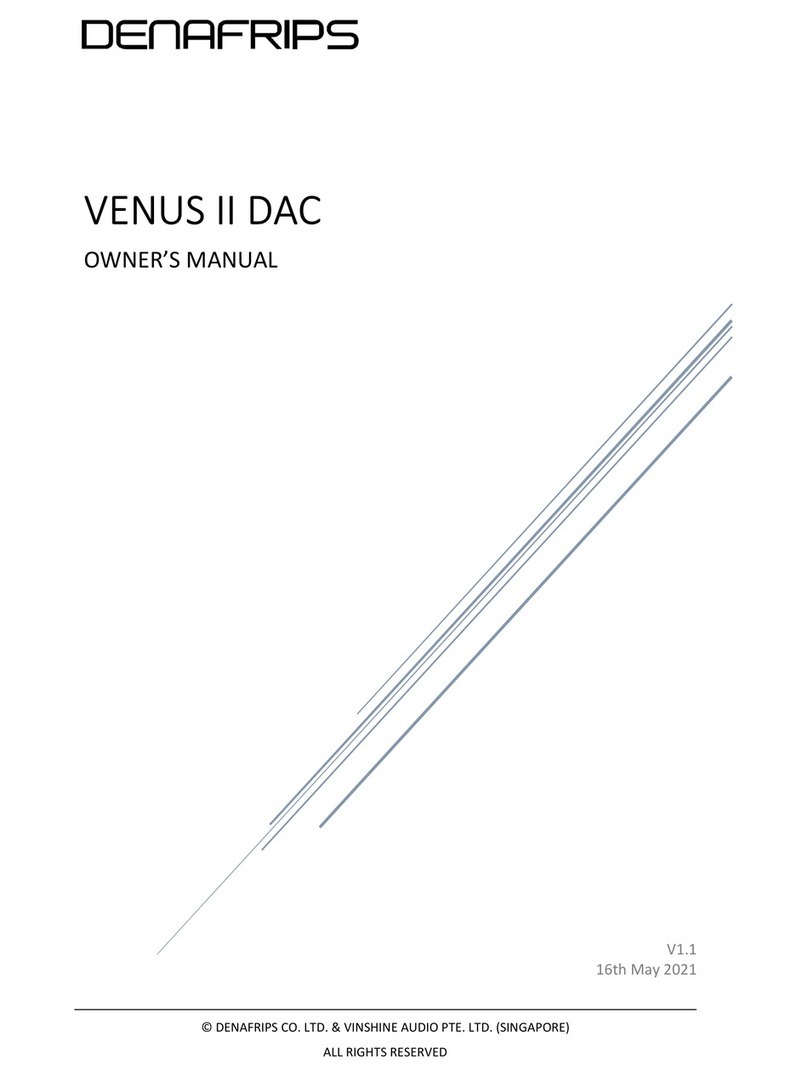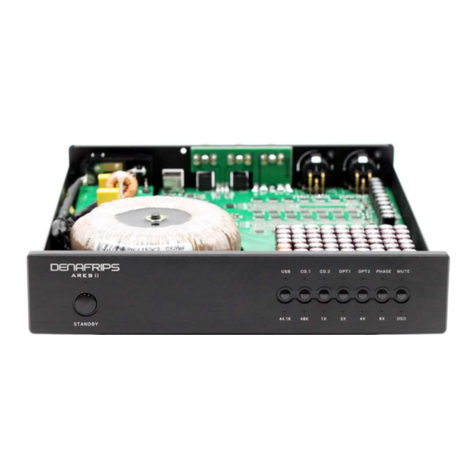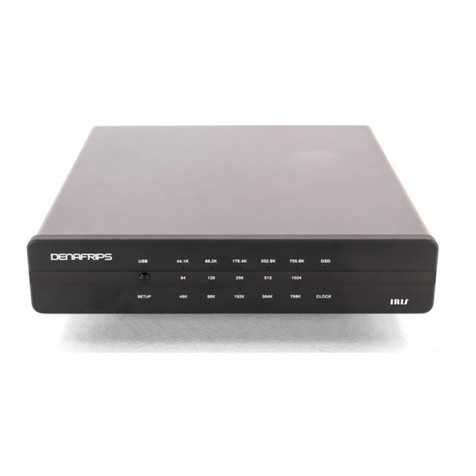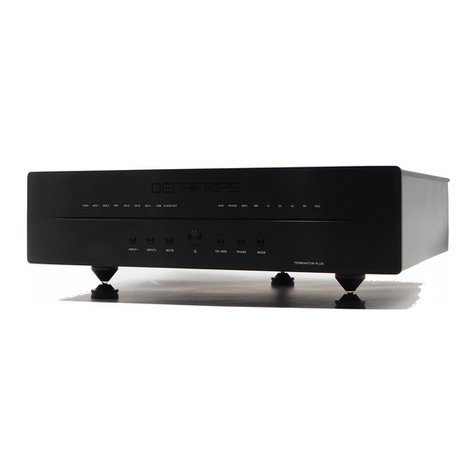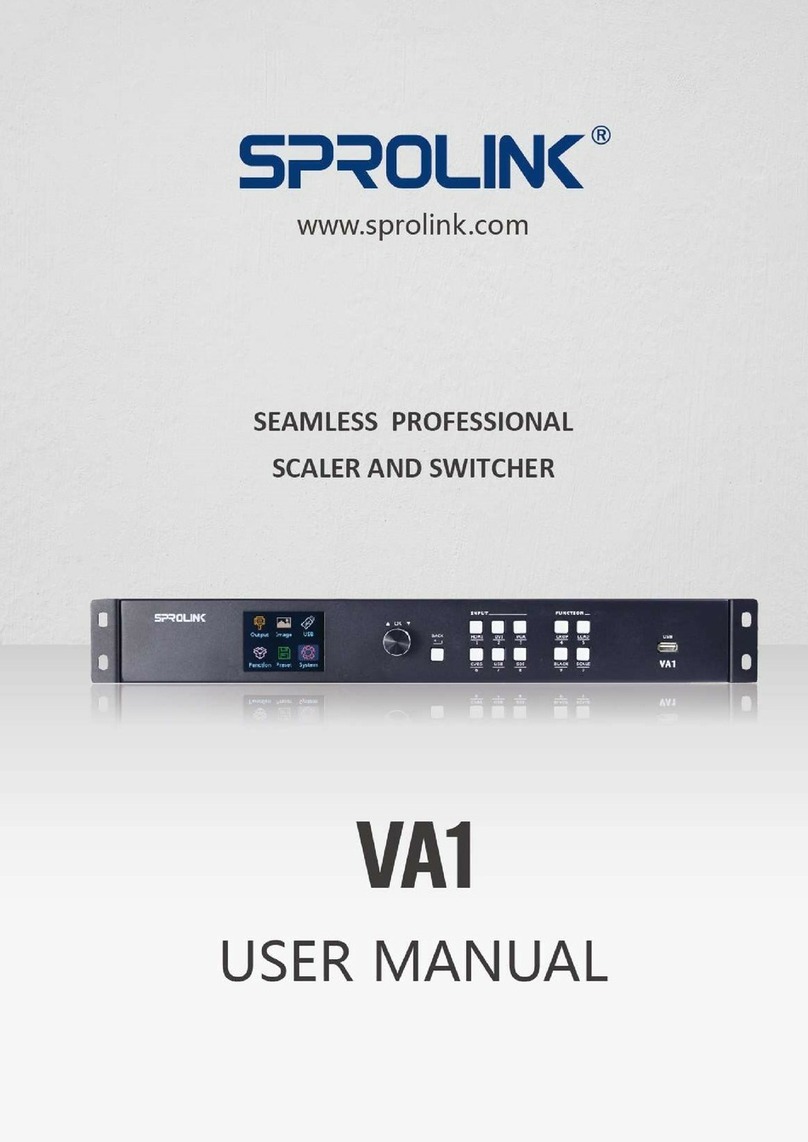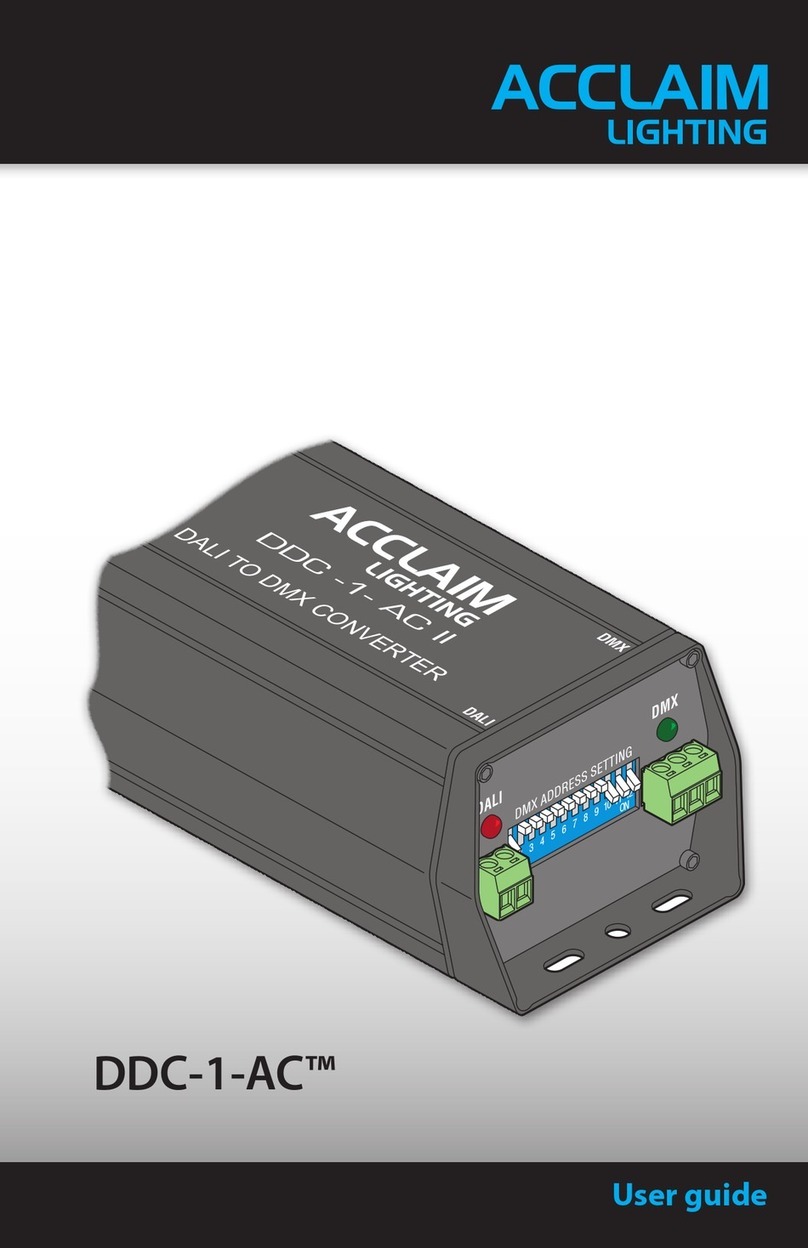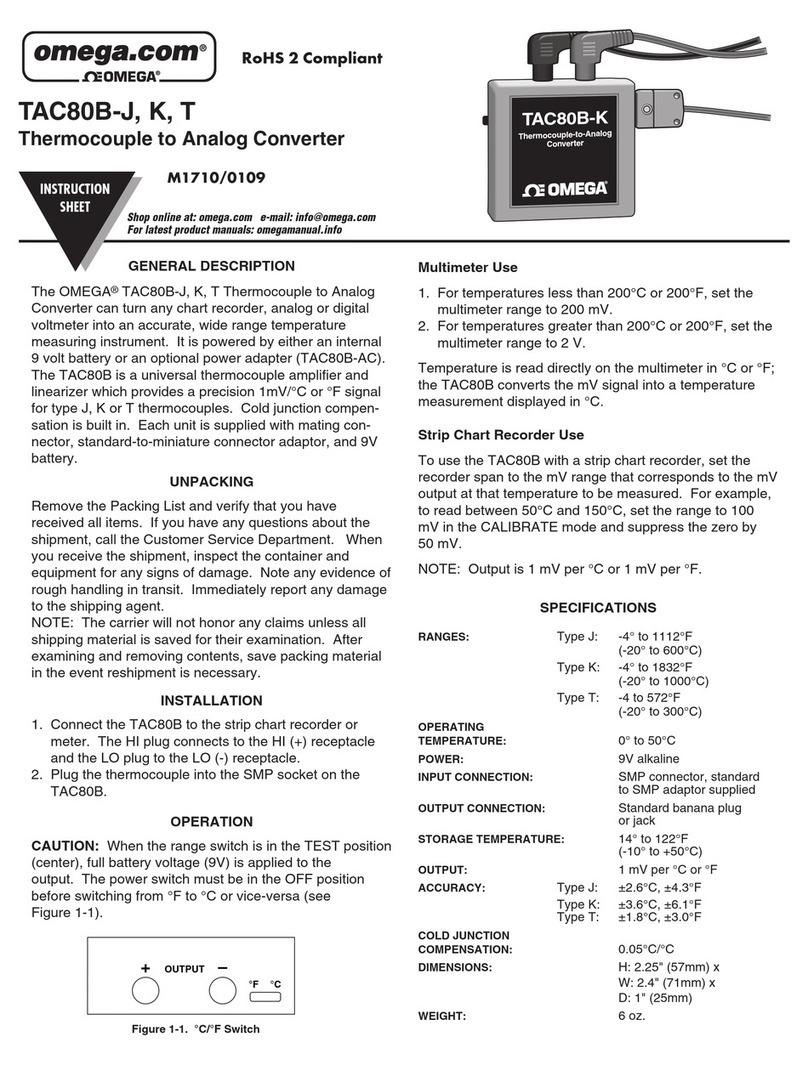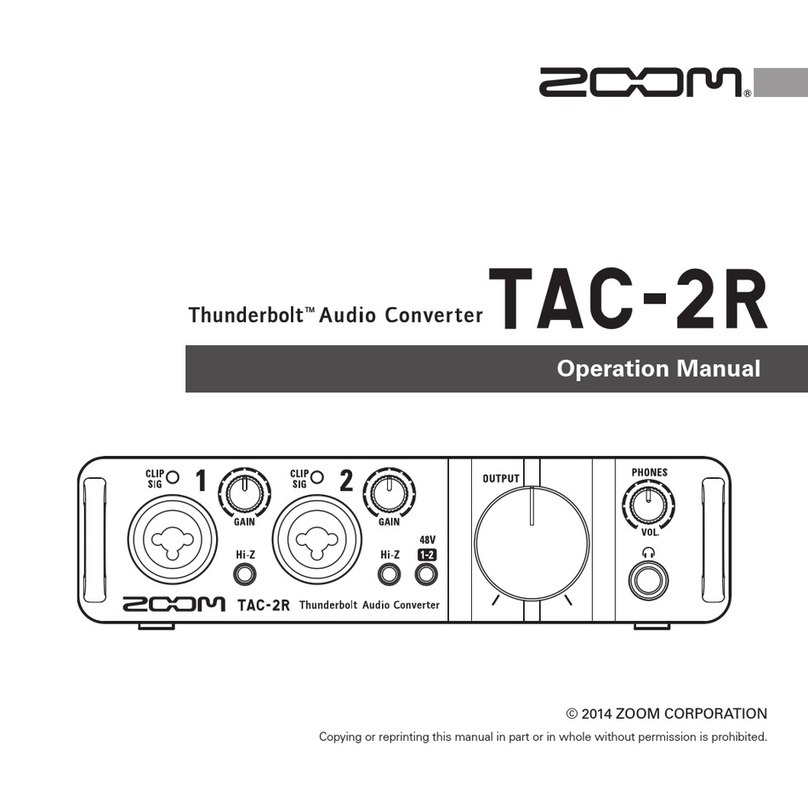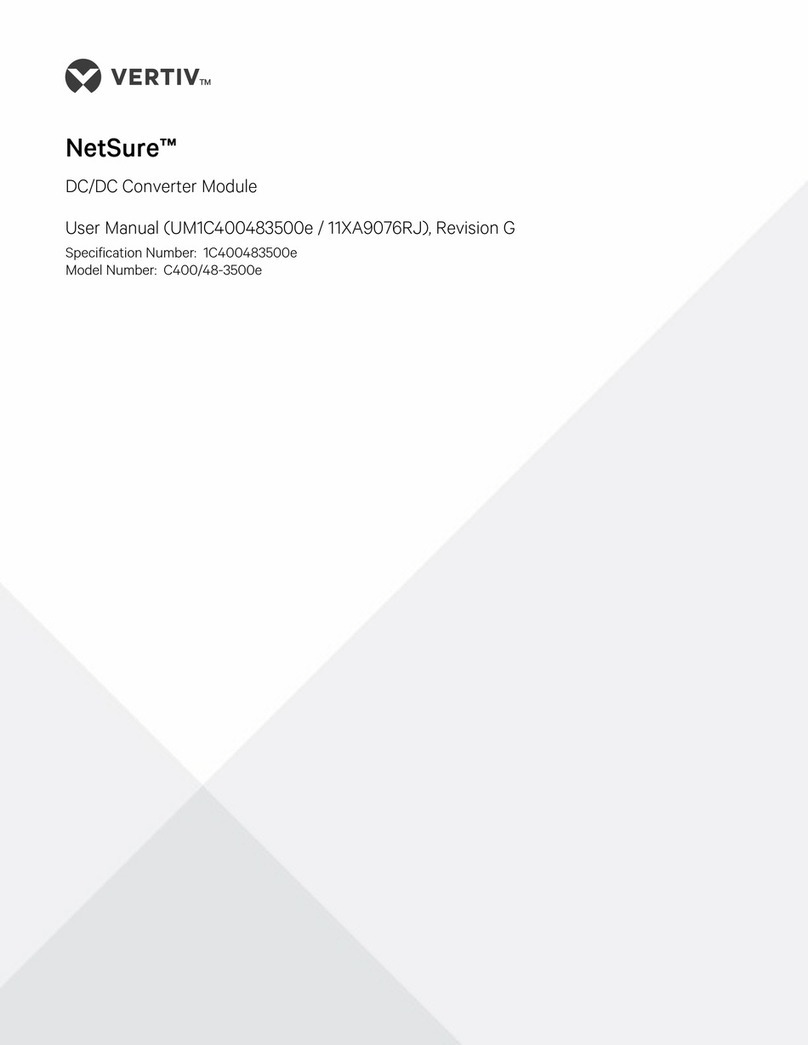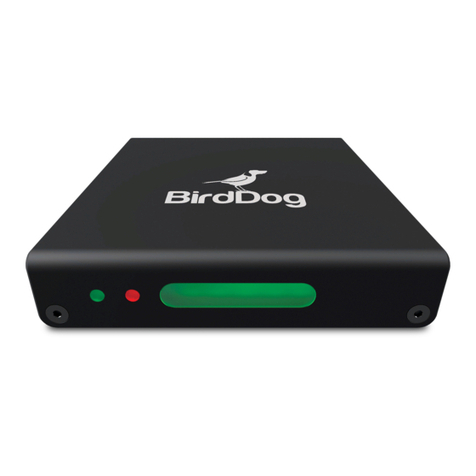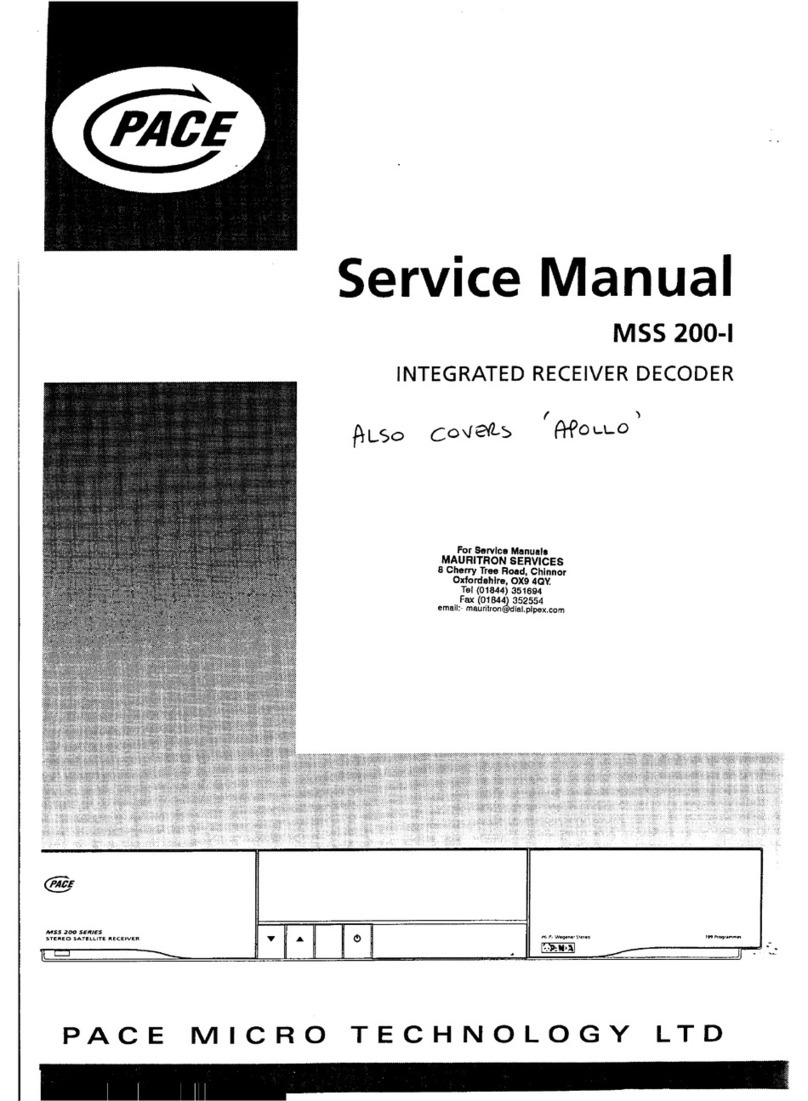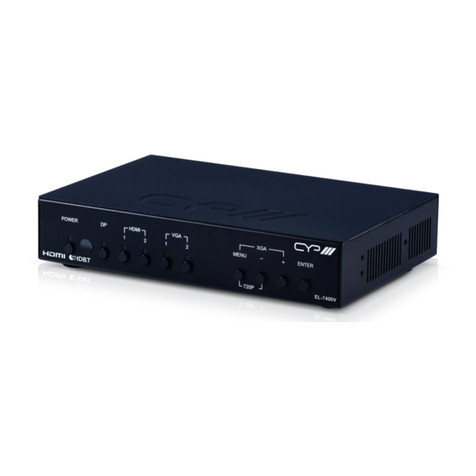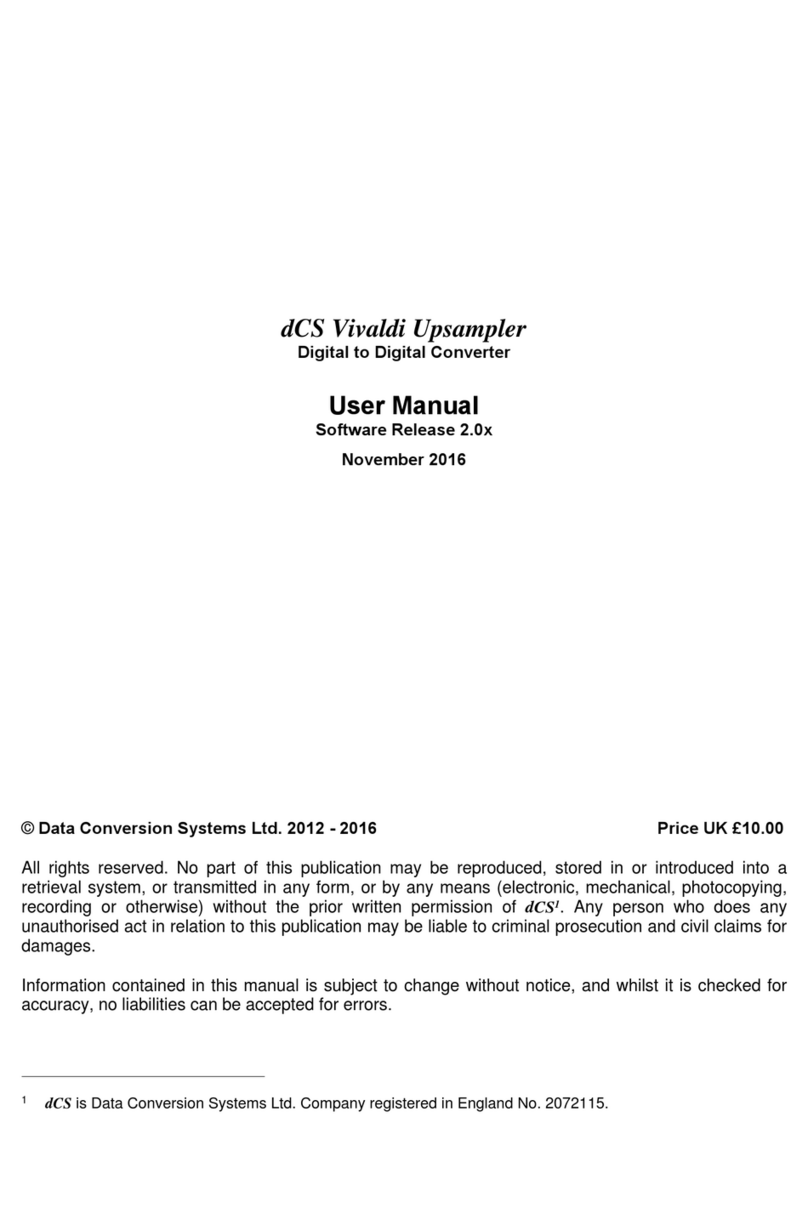
COPYRIGHT © DENAFRIPS 2 | P a g e | V 3 . 0 | 2 4 t h N o v 2 0 1 7
2. DESIGN HIGHLIGHT
2.1 ADAPTIVE FIFO MEMORY CACHE ARCHITECTURE
Adaptive FIFO technology is used to transfer the audio data input to the high-speed RAM
buffer, and, by using the high stability active crystal clock signals generated from within,
extract the audio data from the high-speed RAM and converts these data to I2S protocol,
then, transmit the I2S data to the R2R DAC for DA conversion.
This FIFO is literally jitter free. It eliminates the possible jitter caused by the upstream
source, cable, or the digital receiver chip in the DAC. Let’s put it this way, the number of
jitter in Pontus DAC can only be caused by the quality of FIFO active crystal. Pontus’ crystals
are Japanese NDK made, and powered by LDO regulator, the jitter is so small that it can be
neglected.
2.2 I2S INPUT
Pontus i2s DAC works slave mode, the source i2s shall provide the necessary MCLK to work
with the DAC. The i2s is not an industrial standard, DENAFRIPS cannot guarantee the
compatibility with other i2s devices.
2.3 AMANERO USB MODULE
The Pontus is equipped with the famous Amanero USB Module, with DENAFRIPS redesigned
and optimized circuitry, allow the Pontus to be used as high-end DAC with computers /
streamers. It supports 24bit/384kHz PCM data stream, and DSD64, DSD128, DSD256
decoding via asynchronous USB input.
NOTE: The USB Module is designed to switch on only when USB Input is selected. This is
specially designed to reduce inputs interference for best sound reproduction.
2.4 LOW JITTER AKM AK4118 DIGITAL AUDIO RECEIVER
It is known that the jitter contributes greatly to the sound quality. The use of a low-jitter
digital audio receiver chip is indeed necessary. The AKM AK4118 is currently the lowest
clock jitter digital receiver audio chip available in the market.
2.5 NOS/OS
Fancy of NOS/OS selection to change the sound signature of the DAC? The Pontus allow user
to change the sampling mode on the fly. NOS, as the name suggested, does not do Over
Sampling of the digital input stream. The sampling rate of the digital input signal remain
untouched, and it is converted to analog output signal right away.


